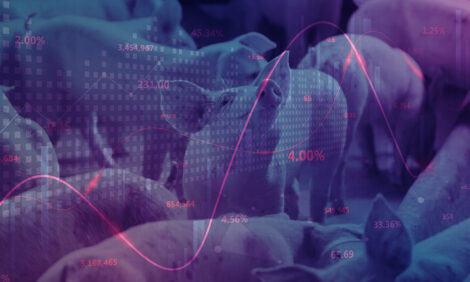



UK/EU Market Update - January 2003
By the UK's Meat and Livestock Commission - This MLC report looks at the current market situation in the UK and reviews recent price trends and markets throughout Europe.UK Producer Prices

United Kingdom producer prices moved very little in the run up to Christmas. The average producer price in the six weeks before Christmas moved within the range 90-91p/kg dw. The most recent prices for the week ended 11 January indicated an increase of 1p to 92p, although, within this overall average, spot prices are likely to have gone up by more.
Cold weather in early January has been one reason for the firmer tone to the market. But a developing shortage of pigs, both home produced and imported, has also been an important factor. Sterling has weakened against the Euro in recent weeks, currently valued at 65p compared with 62p a year ago, and this will have made imports less attractive.
In 2002, UK prices moved within a range of 88p to 105P. But in the year as a whole they averaged just 94p, 4p lower than in 2001 when prices were affected by FMD export restrictions.

EU prices were fairly steady during December. During the course of the month the UK price premium over the EU price increased slightly to around 13p/kg. Prices in most member states are down compared with a year ago, when pig meat prices were still benefiting from a switch in demand from beef.

An estimated 40,000 tonnes of pig meat was contracted for private storage in the first three weeks of the scheme up to 29 December 2002. Some 22,500 tonnes were contracted for storage in Denmark, mostly for five months. The scheme is next most popular in the Netherlands (6,500 tonnes).
Slaughterings
From the beginning of 1999 through to the middle of 2002, clean pig slaughterings in Great Britain shows a considerable downward trend. This was primarily due to the contraction in the national breeding herd. Reductions in sow productivity over the past two years have also been an important secondary factor. Weekly GB throughputs reached a low point of 159,000 head in June 2002 and have since shown a small recovery. Estimated weekly throughputs in November were 185,000 head. Average throughput fell back slightly to 174,000 head in December, but this was due to a short Christmas working week.
The slight recovery in throughputs since mid-year can be attributed to two factors: a relatively stable herd in the first half of 2002 and some recovery in productivity. United Kingdom slaughterings have picked up slightly more than GB slaughterings. This is because of an increase in Northern Ireland, where the breeding herd has been more stable than in Great Britain. Northern Ireland slaughterings have also benefited from an increase in live pig imports from the Irish Republic.

There are indications that some producers have been successful at reducing the incidence of PMWS in their herds. The effects of this can be seen in the following graph. This shows that in the past few months there has been a recovery in apparent sow productivity, although productivity remains below pre-2001 levels.

UK clean pig slaughter for 2002 as a whole totalled 10.2 million head. This was two per cent lower than in 2001 and the lowest annual slaughter total for over 40 years. However total pig meat production, at 795,000 tonnes, was two per cent more than in 2001. There were two reasons for this.
Firstly, there was a large increase in sow slaughterings and production.
Secondly, there has been a further increase in carcase weights due to changes in contracts combined with producers aiming to maximise production within contracts. The 2002 average carcase weight is estimated at 72.7kg, 3.5kg more than in 1999 and around 10kg more than 10 years ago.
Consumption
Sales of fresh pork were disappointing through most of 2002. In the 12 weeks to 5 January 2003 the volume of purchases was down 4% compared with a year earlier although, due to higher retail prices, the value of expenditure was just 2% lower.
Bacon had a much better year; the consumption volume was up 2% in the 12-week period and the value of expenditure up 1%. Bacon imports accounted for a higher share of the retail market in 2002, with a particularly sharp increase seen for Dutch bacon.
EU Pigmeat Prices
Processed pig meat products in general showed positive growth in the retail sector last year. The volume consumption of frozen pork products grew by 6% in the 12-week period. Within this segments, ready meals were a particularly fast-growing product line. Consumption of pork sausages was up 4% on the year before while increases of 4% were recorded for both sausage rolls and ham.

Russian Meat Import Restrictions
It is likely that the Russian government will introduce tariff rate quotas for pig meat, as well as for beef and poultry, within the next few weeks, possibly by mid-March. It is thought the TRQ levels for pig meat could be in the region of 450,000 tonnes a year. Any imports outside of this quota would attract a much higher tariff rate.
Russian import data is not available for the whole of 2002 yet, but estimates indicate total imports in excess of 600,000 tonnes. This could mean that anything between 100,000 tonnes and 200,000 tonnes would fall outside of quota.
As the Brazilians (low cost producers) make up the bulk of the market, it is clear that higher cost producers like the EU will suffer most from the imposition of the TRQ. Clearly there could be a negative impact on EU prices in general, while the UK could potentially see increased imports for pig meat displaced from the Russian market.
Source: MLC - January 2003








